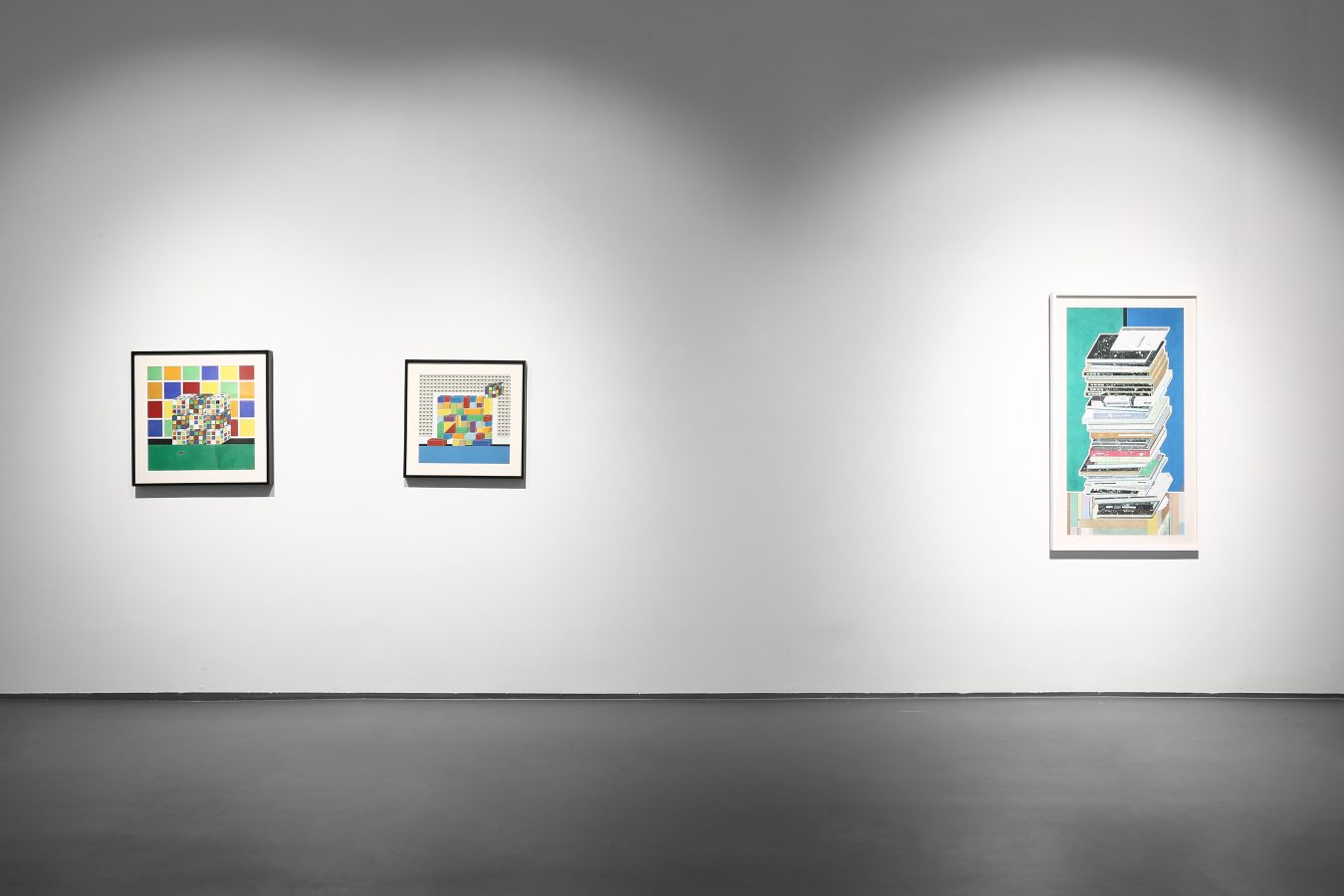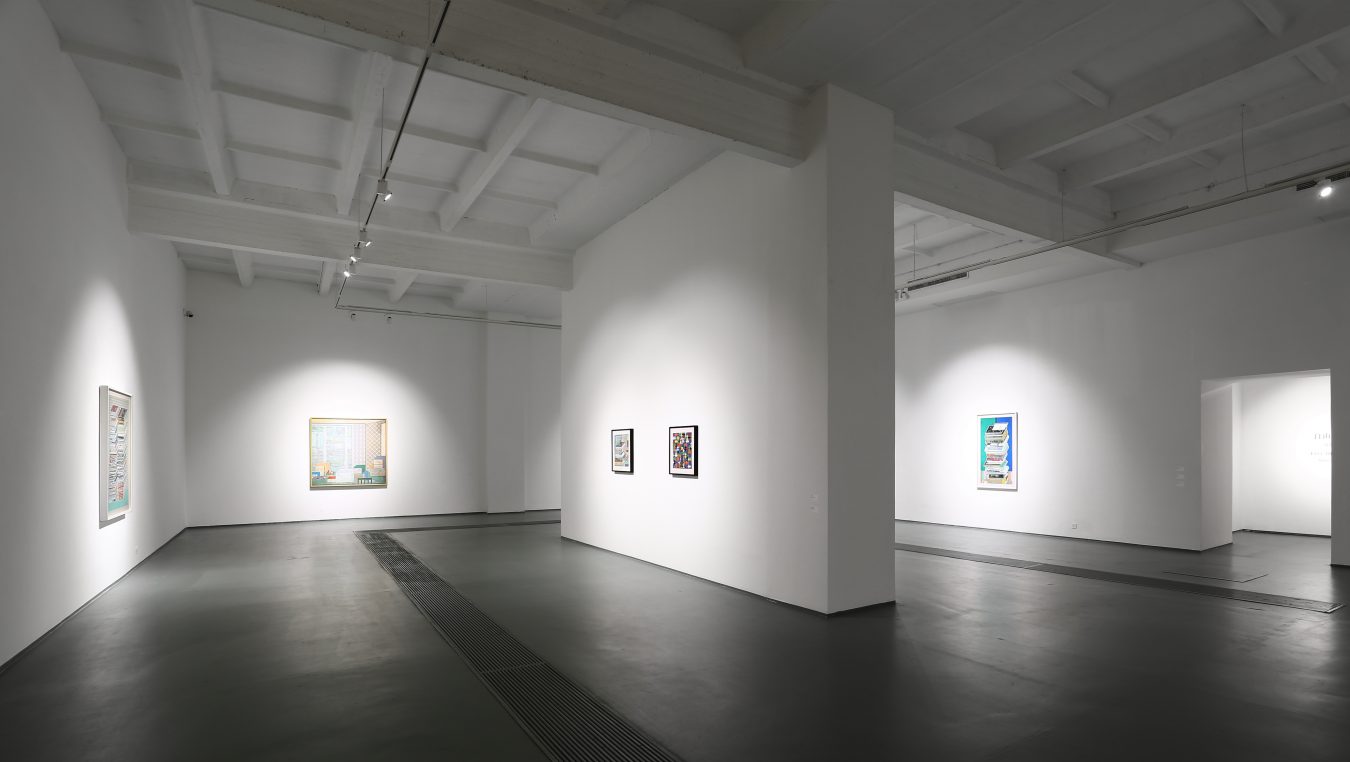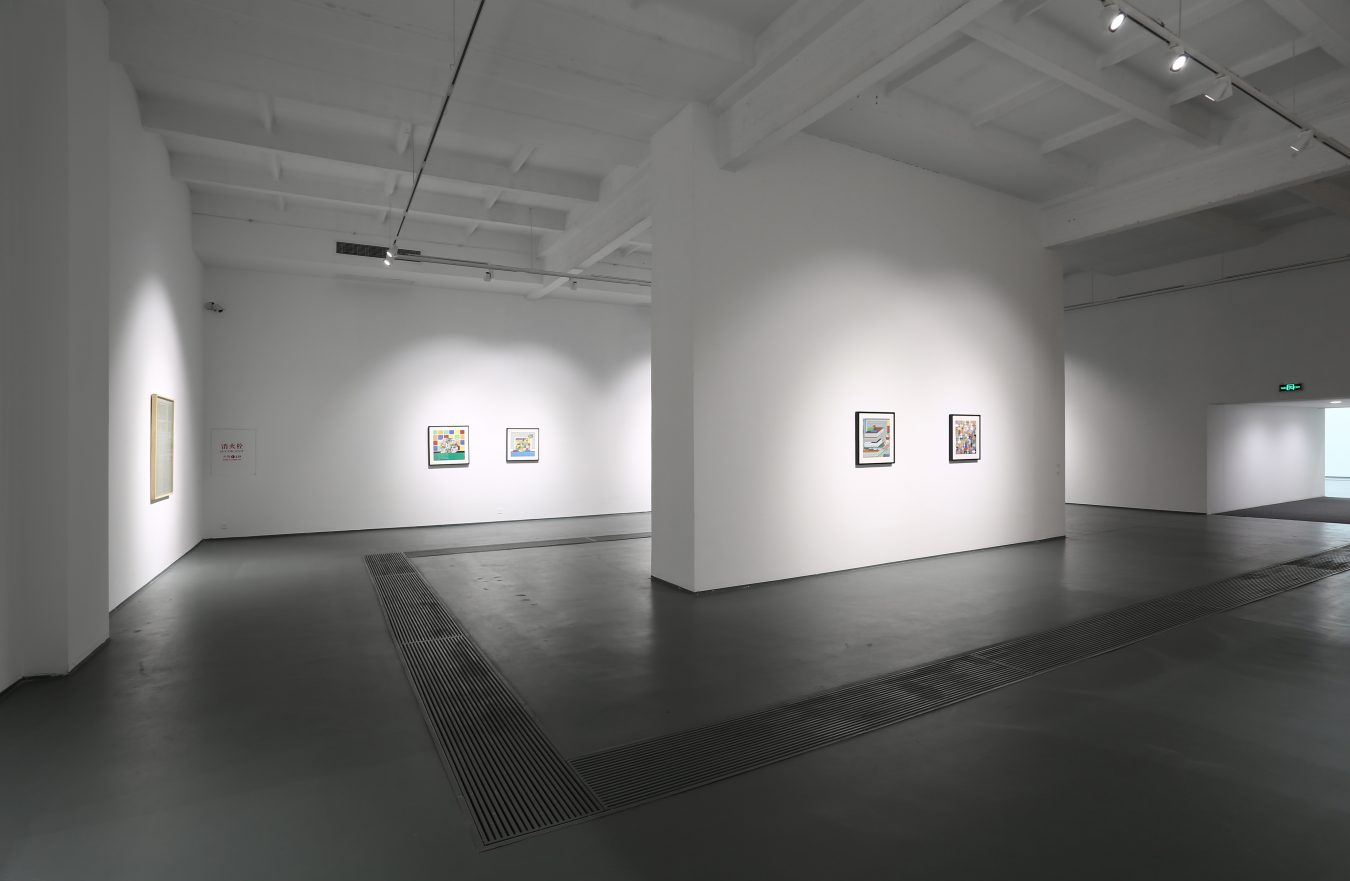The Hive Centre for Contemporary Art has the greatest honor to announce that the exhibition Peng Jian: The Composition Under Rulers will be inaugurated at 4.00 p.m. on the 20th of September, 2014. The exhibition is curated byWang Xiaoyu, and will last till the 20th of October, 2014.
When the ancients painted shanshui landscapes, they were not painting portraits of nature. As Shitao said, “The mountains and rivers emerge from me, and I emerge from the mountains and rivers,” revealing the meandering interplay between self, nature and painting. When people surrender themselves to nature, the towering, rippling, flowing terrain is also reshaping the terrain of that person’s soul. The “refuge in the heart” is built through the mutual illumination and observation between man and nature. When a person bids farewell to nature, returns home and reflects on his own heart, it is just the beginning of painting. What the artist paints is not what the eyes see but the landscape within the heart. Outside of painting, nature seems to have provided the ancients with guidance in life at every turn. The structure of the landscape painting seems to permeate everything: landscaped gardens, rhetoric, physiognomy, even the layout of writing desks—the ancients could practice the layout techniques they had absorbed from nature right at their desks, with a carefully arranged study reminiscent of a landscape painting.
In this day, nature cannot so easily take part in the shaping of the contemporary spirit, yet Peng Jian has carried on in the ancient methods of perceiving and transforming the natural world in his works. In his paintings, we can see the confluence of the two great traditions of shanshui landscape painting and interiors. His paintings often depict a corner of a study (as seen in Empty Room); in the foreground, books are scattered out in a random, yet refined manner, while a curtain in the back alludes ambiguously to a boundary between inside and outside. Off in the distance, we see a crowded, bustling cityscape. The spatial relationship that forms between the study, the curtain and the city form a fitting description of the mental structure of modern man—the curtain is like a dividing wall, which serves as a vivid allegory for the urban experience, that great existential challenge in everyone’s life of how to find balance between the clamor of the world and the tranquility of the heart. As they say, “when I observe things, they take on my own traits.” The everyday scene depicted in Peng Jian’s paintings is not a painstaking recreation of the literati’s home, and has no intention of speaking on behalf of elegant lifestyles. This is a conceptual expression that transcends the meaning of the images on the surface. It is a depiction of an interior space, a space of the mind. We can still see the forms and layouts of ancient shanshui painting in these works—the table extends in an emerald green, containing grass-like ripples; the rising and falling stacks of books are like a broad valley; and the towering forest of buildings beyond the curtain is like the endless rocky peaks in the far distance. The shifting spatial constructs of ancient shanshui painting have been deftly employed in the desk, the room and the “urban landscape.”
Peng Jian has employed the traditional “ruled line” painting approach. This genre of painting follows exacting principles to precisely recreate vast, complex architecture. It bears little relation to the flowing freehand brushwork we commonly see in literati painting. At a time when literati sentiments are enjoying a bit of a revival, Peng Jian has chosen the difficult and oft-ignored style of ruled line painting. Though ruled line painting is highly precise, it is not an exact representation of what is seen with the human eye. The artist must still seek out rhythm and melody in laying out the painting. The tightness and looseness of ruled line painting fit perfectly with Peng Jian’s qualities as a painter to produce a thickly woven tapestry of coldness and passion. Peng Jian’s coloring approach draws from Chinese traditional heavy-color painting, with each color stacked in a precise dialectic. Peng Jian carries on in traditional coloring techniques, but he has also developed a highly individual color system, with bright, pure, leaping colors. A diffuse gray tone also emerges in the paintings, which perhaps stems from the mottling of ancient Chinese murals.
The contemporary expression of Chinese shanshui painting has already begun to lose its vitality, becoming a simple combination of tricks, formulas and indulgences. We can still sense the shanshui landscape breathing silently in Peng Jian’s paintings, and perhaps this is a true continuation of shanshui traditions in contemporary art, even though it may not be so obvious on the surface.









